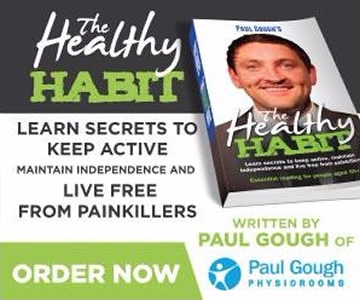Introduction: When Back Pain Takes Over More Than Just Your Body
Back discomfort isn’t just about the aches themselves. It has a way of creeping into daily life—making it harder to enjoy a walk, concentrate at work, or even relax at home. For many, the frustration isn’t just the physical feeling, but the way it quietly steals moments of comfort, independence, and confidence.
The truth is, back pain is one of the most common complaints people experience. Yet, while it’s widespread, it’s also often misunderstood. Many well-meaning habits, routines, and choices can actually make it worse without us realising.
This blog explores five common mistakes that can intensify back discomfort, why they matter, and simple alternatives that may help you take back a sense of control.
Mistake 1: Ignoring the Early Signs
Why It Makes Things Worse
It’s tempting to brush off stiffness or mild aches as “just part of getting older” or “something that will pass.” But ignoring those early signals can give small issues the chance to develop into longer-term discomfort. By the time it’s noticeable enough to impact daily life, it often requires more time and effort to manage.
What to Do Instead
Listen to your body. Even subtle changes—like finding it harder to get comfortable in a chair, or feeling stiff when standing up—are worth noticing. A few minutes of gentle stretching, posture check-ins, or breaks from prolonged sitting can make a difference. And if concerns persist, seeking professional guidance early can provide clarity before things build up.
Mistake 2: Sitting for Too Long
Why It Makes Things Worse
Modern life often means long hours at a desk, behind the wheel, or on the sofa. Extended sitting places pressure on the spine, tightens muscles, and weakens core support. Over time, this leads to stiffness and makes the back more prone to flare-ups.
What to Do Instead
Build movement into your routine. Stand up every hour, walk around while on the phone, or set reminders to stretch. Even short bursts of activity—rolling the shoulders, gentle twists, or a quick walk—can keep the back mobile. The key isn’t perfection; it’s breaking up those long stretches of inactivity.
Mistake 3: Overdoing It with Heavy Tasks
Why It Makes Things Worse
Gardening marathons, heavy lifting, or rushing through housework can all place sudden strain on the back. Without pacing or proper technique, these activities overload the spine and muscles, often leading to discomfort later in the day.
What to Do Instead
Pace yourself. Break big tasks into smaller chunks and switch positions regularly. When lifting, bend through the knees rather than the waist, and avoid twisting while carrying weight. Using supportive tools—like trolleys, long-handled implements, or sharing the load with someone else—can also make a huge difference.
Mistake 4: Believing Rest Alone Will Solve It
Why It Makes Things Worse
When discomfort strikes, many people feel the urge to stop moving altogether. While rest can provide short-term ease, too much of it often leads to weaker muscles, reduced flexibility, and more stiffness—making recovery harder.
What to Do Instead
Balance is key. Rest when needed, but combine it with gentle activity. Short walks, stretching, or light exercises recommended by a physiotherapist can keep the body moving without overloading it. Movement helps the spine and surrounding muscles stay resilient, which supports long-term comfort.
Mistake 5: Assuming It’s “Just Something You Have to Live With”
Why It Makes Things Worse
Perhaps the most damaging mistake is believing back discomfort is inevitable and unchangeable. This mindset often stops people from exploring supportive options that could improve how they move and feel. Accepting discomfort as permanent can also take a toll emotionally, limiting confidence and independence.
What to Do Instead
Shift the mindset from “nothing can change” to “what small steps can I try?” Whether it’s adjusting posture, introducing regular movement, or seeking professional advice, there are always supportive options worth exploring. Physiotherapy, for example, provides education, hands-on support, and tailored exercises designed to encourage steadier movement over time.
Everyday Habits That May Help
- Hydrate: Water helps joints and muscles function smoothly.
- Check Footwear: Supportive shoes reduce strain through the spine.
- Stretch Daily: Gentle movements keep stiffness from building.
- Stay Warm: Heat supports flexibility in cooler months.
- Balance Rest and Movement: Neither extreme works well—steady moderation does.
When to Seek Professional Guidance
While small changes can make a difference, persistent or worsening discomfort may benefit from professional input. Physiotherapists are trained to assess posture, habits, and movement patterns, providing personalised strategies that support long-term mobility.
These sessions aren’t about quick fixes or unrealistic promises. Instead, they create space to understand what’s happening in your body, answer questions, and find steady, sustainable ways forward.
Conclusion: Small Shifts, Big Impact
Back pain can feel overwhelming, especially when it limits daily life. But often, it’s not just the pain itself—it’s the habits surrounding it that either help or hinder progress. By avoiding these five mistakes—ignoring early signs, sitting too long, overloading tasks, relying on rest alone, and believing nothing can change—you open the door to small but powerful adjustments.
Remember: progress isn’t about erasing discomfort overnight. It’s about building a routine of awareness, gentle activity, and support that helps you move with greater confidence.
👉 Book a Free Discovery Visit at Paul Gough Physio Rooms today and take the first step toward steadier, more comfortable movement.
📞 Call 01429 866 771
🌐 www.paulgoughphysio.com/request-a-call-back


